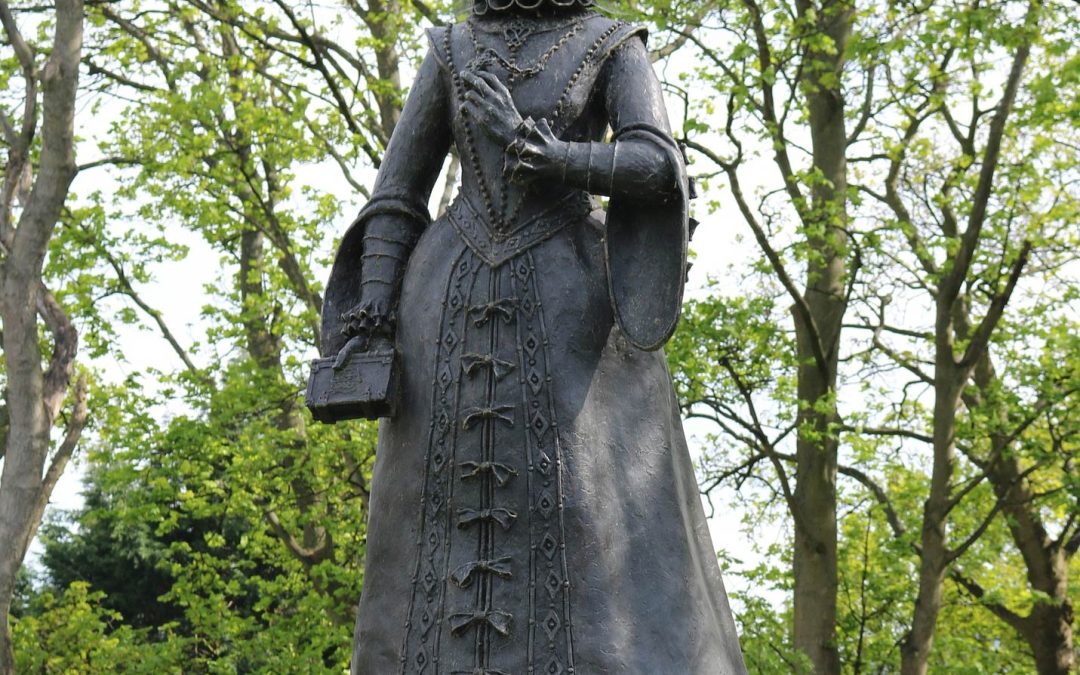Carberry Hill Monument is believed to have been built in the 16th century and was used as a lookout point during the Battle of Carberry Hill in 1567. The battle was a significant event in Scottish history and played a crucial role in the downfall of Mary, Queen of Scots. Today, the monument stands as a testament to the country’s turbulent past and serves as a reminder of the sacrifices made by those who fought for their beliefs.
Visitors to Carberry Hill Monument can explore the site and learn more about its history through informative displays and exhibits. The monument is open to the public and is a must-visit destination for anyone interested in Scottish history and culture. Whether you’re a history buff or simply looking for a scenic spot to take in the views, Carberry Hill Monument is a must-see attraction in East Lothian.
Historical Significance
Battle of Carberry Hill
The Battle of Carberry Hill took place on June 15, 1567, during the reign of Mary, Queen of Scots. The battle was fought between the forces of Mary and those of the Confederate Lords, who opposed her marriage to James Hepburn, Earl of Bothwell. The Confederate Lords were led by James Stewart, Earl of Moray, and William Kirkcaldy of Grange.
The battle ended in a victory for the Confederate Lords, who captured Bothwell and forced Mary to surrender. The battle marked a turning point in Mary’s reign and ultimately led to her abdication.
Surrender of Mary, Queen of Scots
Role of Confederate Lords
The Confederate Lords played a significant role in the events leading up to the Battle of Carberry Hill. They opposed Mary’s marriage to Bothwell and believed that he was responsible for the murder of Mary’s previous husband, Lord Darnley. The Confederate Lords were able to rally support and ultimately defeat Mary’s forces at Carberry Hill.
Geographical Location
Position in East Lothian
Carberry Hill Monument is located in the county of East Lothian, Scotland. It stands on top of a hill that is about 2 miles east of Musselburgh and 8 miles east of Edinburgh. The monument is situated in the parish of Inveresk, which is known for its rich history and beautiful scenery.
Proximity to Major Cities
The monument’s location on top of a hill provides visitors with a stunning view of the surrounding country. The hill is also a popular spot for hiking and walking, and visitors can enjoy the beautiful scenery while taking a leisurely stroll.
Physical Features
Summit and Inscription
Carberry Hill Monument is located on the summit of Carberry Hill in East Lothian, Scotland. The hill is approximately 130 meters high and provides stunning views of the surrounding landscape. The monument itself is a 5-meter tall obelisk made of red sandstone. It was erected in 1860 to commemorate the Battle of Carberry Hill, which took place in 1567.
At the top of the monument, there is an inscription that reads “To the memory of the brave men who fell at the Battle of Carberry Hill, June 15th, 1567, this monument is erected by public subscription, 1860”. The inscription is in excellent condition and is easy to read.
Surrounding Landscape
The surrounding landscape of Carberry Hill is breathtaking. From the summit, visitors can see the Firth of Forth, Edinburgh Castle, and the Pentland Hills. The hill is also home to a variety of wildlife, including rabbits, squirrels, and birds of prey.
Carberry Hill is part of a range of hills that runs through East Lothian. The range is known for its stunning views and is a popular destination for walkers and hikers. The hills are also home to a variety of historical landmarks, including castles, churches, and ancient ruins.
Historical Figures
Mary, Queen of Scots
Mary’s association with Carberry Hill Monument comes from the Battle of Carberry Hill in 1567. Mary was defeated in this battle, leading to her eventual imprisonment and execution.
James Hepburn, Earl of Bothwell
James Hepburn, Earl of Bothwell, was a Scottish nobleman who played a significant role in Mary, Queen of Scots’ life. He was accused of arranging the murder of Lord Darnley, Mary’s second husband, and later married Mary herself. Bothwell was also present at the Battle of Carberry Hill, where he fought for Mary’s cause.
After Mary’s imprisonment and execution, Bothwell fled to Norway, where he was eventually imprisoned and died in 1578.
Lord Darnley
Lord Darnley was Mary, Queen of Scots’ second husband. Their marriage was troubled, and Darnley was known for his erratic behavior. He was murdered in 1567, and it was widely believed that James Hepburn, Earl of Bothwell, was responsible for his death.
Darnley’s murder was a significant event in Scottish history and played a role in Mary’s eventual downfall.
Events Leading to the Battle
The Murder of Lord Darnley
The murder of Lord Darnley was a turning point in Mary’s reign, as it led to a series of events that ultimately led to her downfall. Many believed that Mary was involved in the murder, and her reputation was severely damaged as a result.
The Council and Troops
Following the murder of Lord Darnley, the Scottish Council met to discuss the situation. They decided to raise an army to capture Mary and bring her to trial for her alleged involvement in the murder. The army was led by the Earl of Morton, who was a staunch opponent of Mary.
The troops marched towards Edinburgh, where Mary was staying at the time. Mary’s own troops were no match for the well-trained army of the Scottish Council, and she was forced to flee the city. Mary and her supporters made their way to Dunbar Castle, where they regrouped and prepared for battle.
The Battle of Carberry Hill took place on June 15, 1567, and it was a decisive victory for the Scottish Council. Mary was captured and taken into custody, and her reign as Queen of Scotland came to an end.
Post-Battle Events
Captivity of Mary, Queen of Scots
Following the Battle of Carberry Hill, Mary, Queen of Scots was taken into custody and held captive at Lochleven Castle. She was forced to abdicate the throne in favour of her infant son, James VI, and was replaced by a regency council.
Eventually, Mary was able to escape from Lochleven Castle and fled to England, seeking the protection of her cousin, Queen Elizabeth I. However, Elizabeth viewed Mary as a threat to her own rule and had her imprisoned for the next 19 years.
Mary’s captivity and subsequent execution in 1587 have become a significant part of Scottish and English history, with many debates still ongoing about her role in the events of her time and the legitimacy of her imprisonment and execution.
Local Fauna
Carberry Hill is home to a variety of wildlife, including a number of different species of mammals, birds, and insects. Visitors to the site may encounter some of these creatures during their visit, particularly if they take the time to explore the surrounding woodlands and fields.
Deer at Carberry Hill
One of the most commonly spotted animals at Carberry Hill is the deer. These graceful creatures are a familiar sight in the local area, and can often be seen grazing in the fields and woodlands around the monument.
There are two species of deer that are commonly found in the UK: the roe deer and the red deer. Of these two, it is the roe deer that is most likely to be seen at Carberry Hill. These small and agile deer are able to navigate the steep slopes and dense undergrowth of the site with ease, and are often seen darting through the trees or grazing in the open fields.
Visitors who are lucky enough to spot a deer during their visit should remember to keep a safe distance, and to avoid disturbing the animals. Deer are wild creatures, and can be easily frightened by loud noises or sudden movements. By observing these creatures from a distance, visitors can enjoy a glimpse of the natural world in a way that is respectful and responsible.
Carberry Castle
Carberry Castle is a ruined castle located near the Carberry Hill Monument in East Lothian, Scotland. The castle was built in the 16th century and was once a grand residence of the Scottish nobility.
The castle played a significant role in Scottish history, particularly during the reign of Mary, Queen of Scots. It was here that Mary was taken prisoner by the Scottish lords in 1567, following her defeat in the Battle of Carberry Hill. Mary was eventually forced to abdicate the throne and was imprisoned in various castles across Scotland before her eventual execution in 1587.
Today, little remains of the castle except for a few fragments of walls and a tower. However, visitors can still explore the ruins and imagine what life would have been like in the castle during its heyday.
Some interesting facts about Carberry Castle include:
- The castle was originally built for the Seton family, one of the most powerful families in Scotland at the time.
- The castle was later owned by the Hamilton family, who were known for their loyalty to Mary, Queen of Scots.
- The castle was besieged by English forces during the Wars of the Three Kingdoms in the 17th century.
- The castle was abandoned in the 18th century and fell into ruin.

